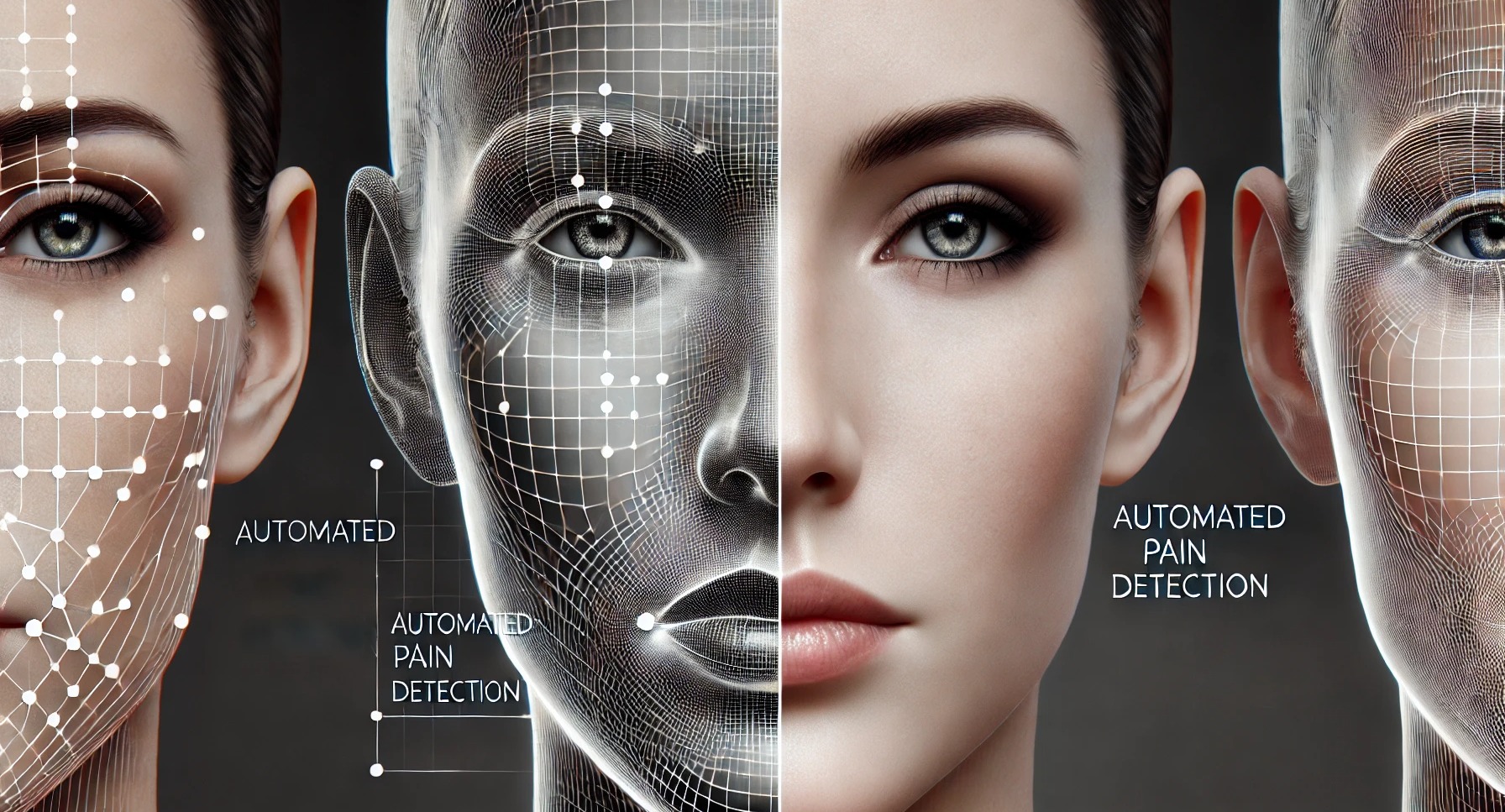Automated Pain Detection using AI
KEY INFORMATION
Healthcare - Diagnostics
TECHNOLOGY OVERVIEW
In healthcare, accurately assessing pain is critical, yet it remains a significant challenge, particularly for patients unable to effectively communicate their discomfort. This includes individuals with cognitive impairments, critical care patients, and pre-verbal children. Traditional pain assessment methods rely heavily on verbal communication or subjective observer-based pain assessment, which can lead to missed or poorly managed pain, resulting in either under-treatment or over-analgesia treatment.
To address this issue, this advanced AI-based solution automates the process of estimating pain intensity by analyzing facial expressions captured in video data. The technology is a deep learning system consisting of facial landmarks (specific points on a person's face, such as the corners of the eyes, nose, mouth, and other prominent facial features) extraction, 3D normalization and Spatial-Temporal Attention Long Short-Term Memory (STA-LSTM) model. These facial landmarks provide critical information about facial expressions, allowing the system to accurately assess pain levels.
By integrating this technology into clinical settings, healthcare providers can significantly enhance patient care, reduce the burden on staff, and improve overall pain management practices. This solution not only ensures timely and appropriate intervention but also protects patient privacy by using non-identifiable facial landmarks, making it a powerful tool for modern healthcare environments.
TECHNOLOGY FEATURES & SPECIFICATIONS
The technology is an advanced AI-based software algorithm designed for automated pain detection using facial expressions. It offers the following features:
- Automated Pain Detection: Utilizes a deep learning model that seamlessly integrates facial landmark extraction and analysis to estimate pain intensity levels without the need for human intervention.
- Real-Time Monitoring: Continuously tracks and assesses pain levels from video footage, providing instant feedback and visual representation of pain level distribution over time.
- AI-Driven Analysis: Powered by a Spatial-Temporal Attention Long Short-Term Memory (STA-LSTM) network, the system excels in identifying and analyzing specific facial expressions related to pain, ensuring high accuracy in pain detection.
- Privacy Protection: The system exclusively uses non-identifiable data by extracting and processing facial landmarks, ensuring patient privacy while maintaining the integrity of pain analysis.
- High Accuracy: Achieves a training accuracy of 98% and a validation accuracy of 92.2%, supported by robust data processing techniques, including 3D normalization of facial landmarks and strategic data balancing.
POTENTIAL APPLICATIONS
This technology is highly suited for hospitals, nursing homes, and healthcare facilities that manage patients who are non-communicative, cognitively impaired, or otherwise unable to express their pain effectively. It is also valuable for telemedicine platforms, rehabilitation centers, and home care services, where remote patient monitoring is critical. Furthermore, the system can be seamlessly integrated into surgical and critical care units to provide real-time pain assessment. Its ability to integrate with existing infrastructure, such as CCTV systems, makes it a cost-effective, easily adoptable solution that enhances pain management across various healthcare settings.
Unique Value Proposition
This system offers secure, non-invasive, objective and real-time pain assessment by analyzing non-identifiable facial landmarks, ensuring patient privacy and compliance with data protection regulations.
- Objective and Continuous Pain Assessment: Provides real-time, objective monitoring, reducing reliance on subjective assessments.
- Improved Patient Outcomes: Ensures timely and appropriate pain management, preventing under- or over-analgesia treatment.
- Privacy Protection: Uses facial landmarks for analysis, maintaining patient anonymity.
- Eases Healthcare Providers' Burden: Automates pain monitoring, allowing staff to focus on other critical tasks.
- Cost-Effective Integration: Easily integrates with existing infrastructure, offering a scalable solution.
- Broad Applicability: Suitable for diverse healthcare environments, including hospitals, nursing homes, and telemedicine.

